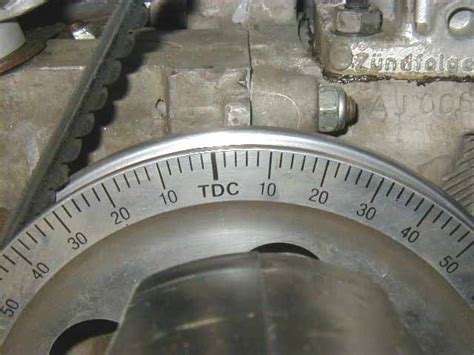Type 1 VW Bug Timing: Simple & Effective
The air-cooled Volkswagen Beetle, affectionately known as the Type 1, is a beloved classic for its simplicity and reliability. However, even this seemingly straightforward machine requires proper timing for optimal performance. Understanding and setting the timing on your Type 1 VW Bug isn't rocket science, but it does require attention to detail and the right tools. This guide breaks down the process into simple, effective steps.
What is Timing, and Why is it Important?
Before diving into the how-to, let's clarify what timing actually is. In a Type 1 VW engine, the timing refers to the precise moment the spark plugs ignite the air/fuel mixture within the cylinders. This ignition must occur at the optimal point in the piston's cycle for maximum power and efficiency. Incorrect timing can lead to several issues, including:
- Reduced Power: The engine won't run as strongly.
- Poor Fuel Economy: You'll burn more fuel for less power.
- Hard Starting: The engine will struggle to ignite and start.
- Rough Running: The engine will idle poorly and run unevenly.
- Increased Emissions: The engine will produce more harmful pollutants.
Tools You'll Need
Before you begin, gather the following tools:
- Timing Light: This is essential for accurately setting the timing.
- Wrench Set: You'll need various sizes to remove and install components.
- Screwdriver Set: Both Phillips and flathead will likely be needed.
- Spark Plug Wrench: A socket specifically designed for spark plugs.
- Owner's Manual (or a reliable Type 1 VW repair manual): This is crucial for specific torque specifications and diagrams.
- A well-lit and clean workspace: Makes the process easier and safer.
How to Set the Timing on a Type 1 VW Bug: A Step-by-Step Guide
1. Prepare the Engine:
- Warm up the engine to operating temperature. This ensures accurate readings from the timing light.
- Disconnect the negative battery terminal for safety.
- Locate the distributor – it's the cylindrical component on top of the engine near the number one cylinder.
2. Find Top Dead Center (TDC):
- This is the crucial first step. Refer to your owner's manual or a repair manual to accurately identify the number one cylinder and locate the TDC mark on the flywheel or crankshaft pulley. Use a screwdriver or a feeler gauge to check for the piston at the very top of its stroke (TDC).
3. Connect the Timing Light:
- Connect the timing light according to the manufacturer's instructions. This typically involves clamping the light's inductive pickup onto a spark plug wire (usually the number one cylinder wire) and connecting the light to the battery.
4. Set the Timing:
- With the engine running, point the timing light at the timing marks on the flywheel or pulley. The number will vary depending on the model year and engine specification. You need to check your manual or reliable source for the correct specification. The illuminated mark should align with the designated timing mark.
- If the timing is off, carefully adjust the distributor until the timing light shows the correct timing mark. A slight rotation of the distributor will adjust the timing. Remember, only small adjustments are usually necessary.
5. Recheck and Secure:
- Once you’ve adjusted the distributor, double-check the timing. Make sure everything is secured in place using the correct torque specifications from your repair manual. Reconnect the battery.
Troubleshooting Common Timing Issues
- Engine Won't Start After Timing Adjustment: Double-check all connections, make sure the distributor is seated correctly, and verify that you have the correct timing settings.
- Rough Idle or Poor Performance After Timing Adjustment: Recheck your timing. A slight adjustment might be needed. Also, check other components such as the carburetor or ignition system.
- Timing Mark Isn't Clear or Visible: Make sure the flywheel/pulley is clean and free of debris. You might need a better light source to see the markings clearly.
Maintaining Your Type 1 VW Bug's Timing
Regular maintenance is key to preventing timing issues. Consider having your timing checked during routine maintenance such as tune-ups. Keeping your ignition system components in good condition contributes to maintaining accurate timing.
This guide provides a basic understanding of setting the timing on a Type 1 VW Bug. Always consult your owner's manual or a reliable repair manual for specific instructions and specifications for your vehicle's model and year. If you’re unsure about any aspect of this process, seek the assistance of a qualified mechanic. Enjoy the open road in your classic VW Bug!

